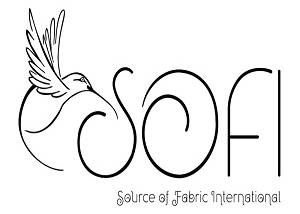Fabric printing has evolved significantly over the years, with various techniques emerging to meet the growing demand for vibrant and durable designs. Among these methods, reactive printing stands out as one of the most advanced and effective. This article explores why reactive printing is highly regarded in the textile industry and how it compares to other fabric printing techniques.
What is Reactive Printing?
Reactive printing is a method where reactive dyes form a covalent bond with the fabric fibers, resulting in bright, vibrant colors that are deeply ingrained into the material. This technique is primarily used on natural fibers such as cotton, linen, and silk, offering exceptional colorfastness and durability.
The Process of Reactive Printing
The reactive printing process involves several key steps:
- Preparation: The fabric is pre-treated with a solution that prepares the fibers to react with the dye.
- Printing: Reactive dyes are applied to the fabric using various printing methods such as screen printing or digital printing.
- Fixation: The printed fabric is steamed to activate the chemical reaction between the dye and the fabric fibers.
- Washing: Excess dyes and chemicals are washed away, ensuring the design is permanent and the colors are vibrant.
Advantages of Reactive Printing
1. Superior Colorfastness
One of the primary benefits of reactive printing is its superior colorfastness. Because the dyes chemically bond with the fabric, the colors are less likely to fade over time, even with repeated washing.
2. Vibrant and Detailed Designs
Reactive printing allows for highly detailed and vibrant designs. The colors penetrate deep into the fabric fibers, resulting in rich, vivid hues that stand out.
3. Soft Hand Feel
Unlike some other printing methods, reactive printing does not affect the fabric’s texture. The printed fabric remains soft and smooth, enhancing the overall quality of the material.
4. Eco-Friendly
Reactive dyes are water-soluble and require less water to wash out excess dye compared to other methods, making reactive printing a more environmentally friendly option.
Reactive Printing vs. Other Printing Methods
Reactive Printing vs. Pigment Printing
Pigment printing is another popular method, but it differs significantly from reactive printing. Pigment printing uses pigments that sit on the surface of the fabric, which can result in a stiffer texture and less vibrant colors. In contrast, reactive printing dyes penetrate the fabric fibers, offering softer and more durable results.
Reactive Printing vs. Discharge Printing
Discharge printing involves removing color from a dyed fabric to create a design. While it can produce unique effects, it is less versatile than reactive printing and may not achieve the same level of detail and vibrancy.
Reactive Printing vs. Sublimation Printing
Sublimation printing is commonly used for synthetic fabrics and involves transferring dye onto the fabric using heat. This method produces vibrant colors but is limited to polyester and other synthetic materials. Reactive printing, on the other hand, is ideal for natural fibers and offers superior durability. Read More About A Beginner’s Guide to Understanding Different Types of Silk Fabrics.
Applications of Reactive Printing
Reactive printing is widely used in various applications, including:
- Fashion and Apparel: From t-shirts to dresses, reactive printing is favored for its vibrant colors and soft hand feel.
- Home Textiles: Bedding, curtains, and upholstery often utilize reactive printing for long-lasting and visually appealing designs.
- Accessories: Scarves, bags, and other accessories benefit from the detailed and colorful designs achievable with reactive printing.
How to Care for Reactive Printed Fabrics
To maintain the vibrancy and quality of reactive printed fabrics, follow these care tips:
- Wash in Cold Water: Use cold water to prevent the colors from fading.
- Avoid Bleach: Bleach can damage the dyes and affect the fabric’s colorfastness.
- Dry in Shade: Prolonged exposure to direct sunlight can cause colors to fade.
- Iron on Low Heat: High heat can damage the fabric and the printed design.
Conclusion
Reactive printing stands out as the most advanced method of fabric printing due to its superior colorfastness, vibrant designs, and eco-friendly properties. Whether for fashion, home textiles, or accessories, reactive printing offers unmatched quality and durability. By understanding the benefits and applications of reactive printing, businesses, and consumers can make informed decisions and appreciate the art of fabric printing. For more insights and expert advice on fabric printing techniques, visit SOFI, your trusted partner in wholesale fabrics.


